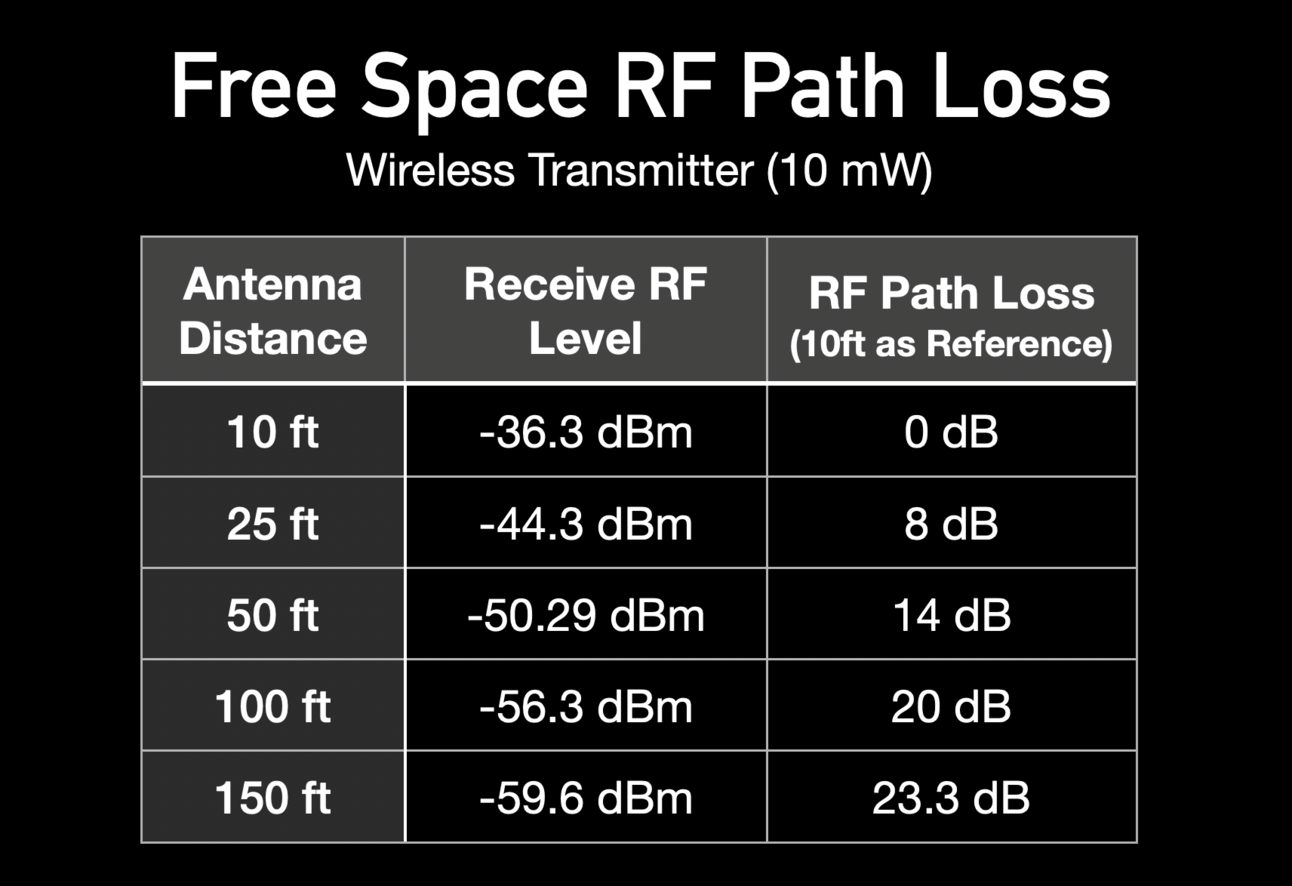Why Wireless Antenna Placement Matters More Than You Think
Last week, we discussed omnidirectional vs. directional antennas and how choosing the right type can improve wireless performance. (If you missed it, you can check out the blog post here.)
But even with the best antenna, where you place it makes a huge difference. You might be surprised how much of an impact just a few feet can have on your wireless mic signal!
This week, we’re exploring antenna placement and RF path loss, explaining why distance matters, how it affects signal strength, and what you can do to keep your wireless mic performing at its best.
The Power Struggle: TV Channels vs. Wireless Mics
When it comes to RF signals, it’s not exactly a fair fight. TV stations blast out signals at a massive 1,000 kW, which results in a reception level of around -40 dBm on our wireless receivers. Meanwhile, our wireless microphones are working with a tiny 10 mW transmitter.
To put that into perspective:
📡 1,000 kW = 1,000,000,000 mW
🎤 10 mW = ...well, a billion times less powerful.
That sheer power is why TV signals travel long distances and cut through walls, while our little wireless transmitters have a much harder time getting through interference.
Why Distance Kills Your Wireless Mic Signal
Even though 10 mW isn’t much power, if your antenna is close to your mic, it can still overpower those massive TV station signals—but only if it's positioned right.
Let’s look at Free Space RF Path Loss at 540 MHz (right in the middle of our UHF wireless mic range of 470-608 MHz). Here’s a breakdown of how signal strength drops as distance increases:
Signal Loss from a 10 mW Wireless Transmitter at 540 MHz
📏 10 feet – Signal strength: -36.3 dBm (solid and strong)
📏 100 feet – Signal strength: -56.3 dBm (much weaker)
That’s a 20 dB drop just from moving the antenna further away! In real-world conditions, reflections and interference can make the loss even worse.

Free Space RF Path Loss with a 10 mW wireless transmitter at 540 MHz
Check Out This Real-World Example
Take a look at the image below, which shows signal reception at two different antenna distances from a wireless transmitter: 10 feet and 55 feet.

📉 At 10 feet, the signal is measured at -47 dBm.
📉 At 55 feet, it drops to -62 dBm—a 15 dB loss!
But notice something important: The TV station's signal strength doesn’t change. That’s because the distance to the TV transmitter hasn’t changed—it’s still blasting out at full power from miles away.
This highlights a key strategy in an RF-dense environment:
✅ You can't control the strength of nearby TV stations, but you CAN improve your wireless mic’s signal strength by moving the antenna closer.
Keeping your antenna as close to the mic as possible boosts your received RF level, helping your signal stand out against the constant background of high-powered TV transmissions.
This simple tweak can make a huge difference in noisy RF environments. It is a quick fix that leads to stronger, more reliable wireless performance.
Bottom Line: Closer is Always Better
So, next time you’re setting up your gear, remember: closer is better! By positioning your antenna nearer to your wireless mic, you’ll maximize your RF reception and keep those audio signals strong.
Next time you set up your wireless system, keep your antennas near the action. The closer they are to your transmitters, the stronger and more reliable your signal will be.
Until next time,
Drew
Whenever you're ready, there are three ways I can help you:
I created a range of Preset Library Downloads that will help your team get professional quality audio without the hassle of starting from scratch. Each product includes .pdfs with full documentation on how to use the preset and why each setting was made.
If you’re looking for a start-to-finish way to get mixing on the Behringer X32, join my X32 Fundamentals Course. In this 6 hour self-paced video course, I’ll guide you through the five fundamentals that will help you go from overwhelmed to confident when mixing on the X32.
For hands on help, schedule an Online Coaching Call with me, personally. Online sessions provide the flexibility to access personalized support while sitting in front of your own equipment and working in real time.